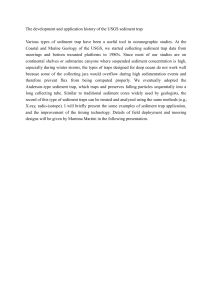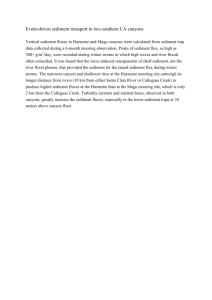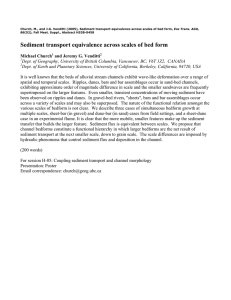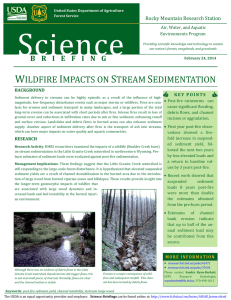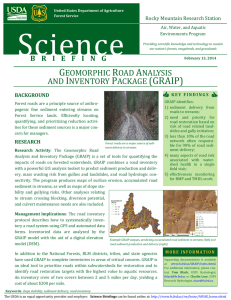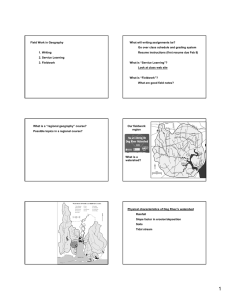Study Guide
advertisement
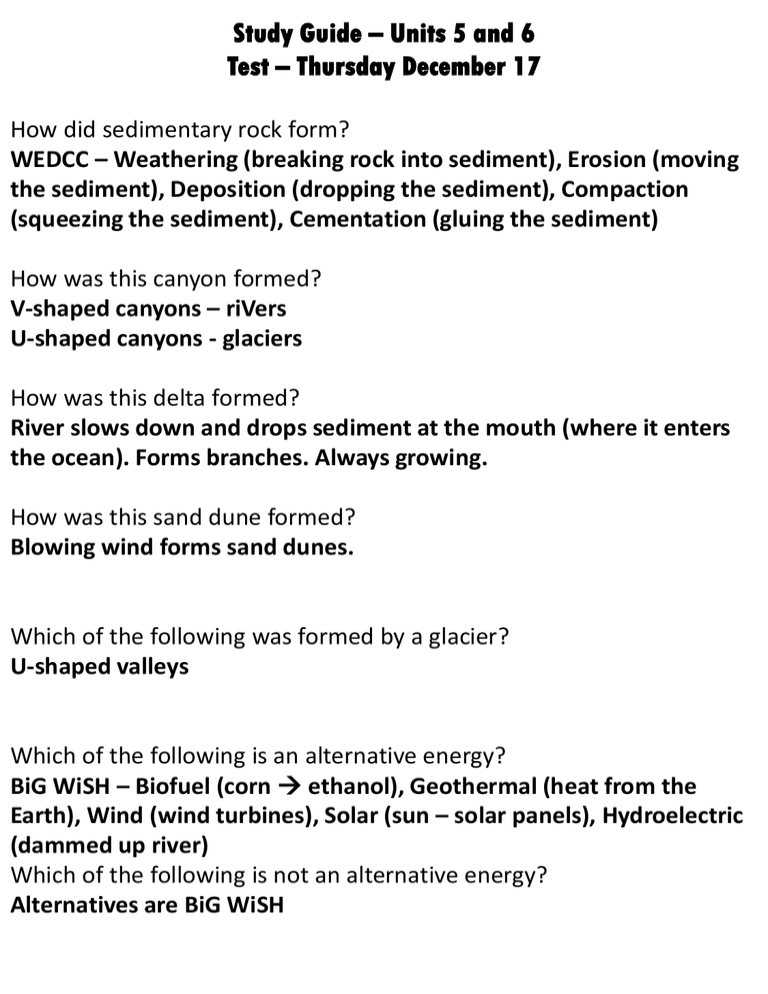
Study Guide – Units 5 and 6 Test – Thursday December 17 How did sedimentary rock form? WEDCC – Weathering (breaking rock into sediment), Erosion (moving the sediment), Deposition (dropping the sediment), Compaction (squeezing the sediment), Cementation (gluing the sediment) How was this canyon formed? V-shaped canyons – riVers U-shaped canyons - glaciers How was this delta formed? River slows down and drops sediment at the mouth (where it enters the ocean). Forms branches. Always growing. How was this sand dune formed? Blowing wind forms sand dunes. Which of the following was formed by a glacier? U-shaped valleys Which of the following is an alternative energy? BiG WiSH – Biofuel (corn ethanol), Geothermal (heat from the Earth), Wind (wind turbines), Solar (sun – solar panels), Hydroelectric (dammed up river) Which of the following is not an alternative energy? Alternatives are BiG WiSH How did coal form? Huge plants died and fell in the swamp. Turned into peat. Covered with layers of sediment. Heat, pressure, and millions of years turned it into coal. How did oil and natural gas form? Phytoplankton (microscopic) in the oceans, lakes, and seas died and fell to the bottom. Covered with layers of sediment. Heat, pressure, and millions of years, turned them into oil and natural gas. Which of the following is a fossil fuel? FF = CON non – Coal, Oil (petroleum), and Natural Gas Where would you find a hydroelectric plant? On a huge river Describe geothermal energy. Heat under ground. Buildings will have pipes underground. What is a creek? What kinds of plants and animals would you find around a creek? A small, small river. Trees with leaves, fish. In what type of environment do ferns like to grow? Warm, humid environments What do fossils tell us? 1. Types of plants and animals that lived in the past 2. What the area was like (environment, habitat) – was it a desert, swamp, ocean, jungle, forest, etc).




